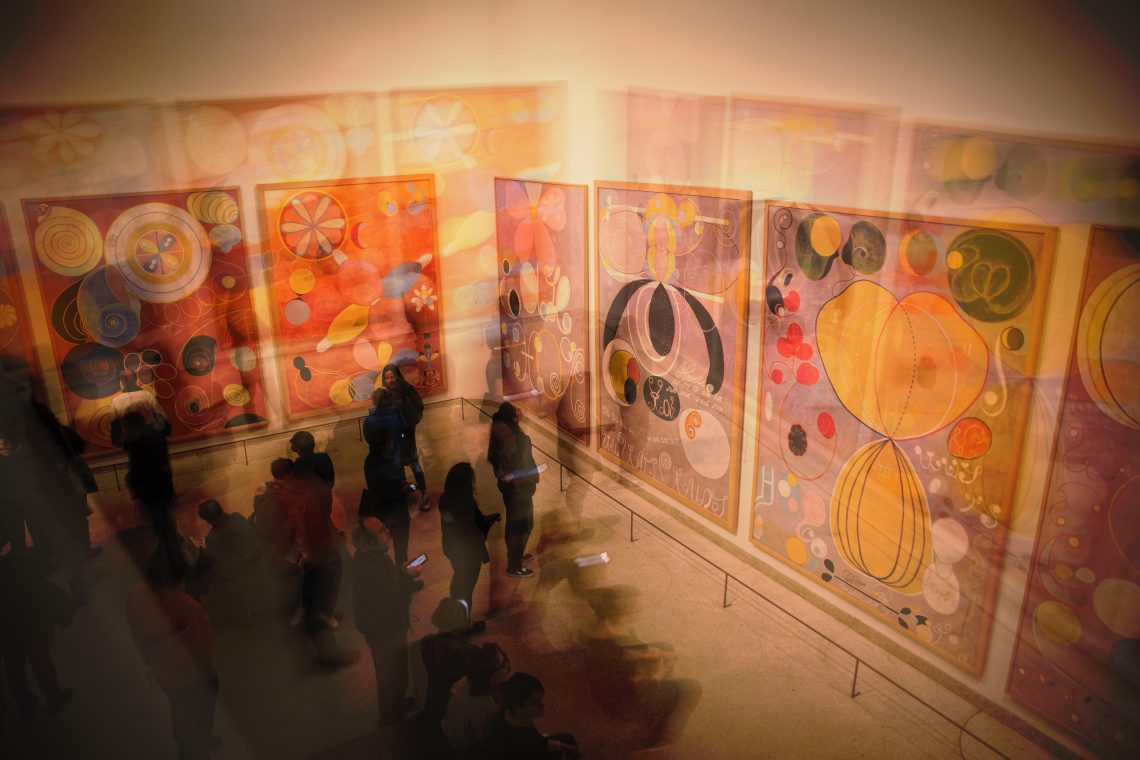What exactly is an art fair? Why are they important (especially in such a digitized world?) And what do they mean for fast-growing online galleries like Singulart?
The basics
More trade-show than county fair, an art fair is a gathering of galleries, collectors, curators and dealers, all ready to browse, buy and sell. The biggest fairs, such as Art Basel (and its various satellite fairs) and Frieze, regularly sell works by the world’s most prominent artists, such as Jeff Koons and Neo Rauch, and attract international A-listers such as Brad Pitt and Jennifer Lopez. This in part explains the enduring presence of art fairs; they’re still mostly seen as arenas for the wealthy, privileged, and those in the upper echelons of the art world. That’s not to say, however, that all organisational bodies wish to keep it that way. As a gesture of inclusion and accessibility, major Paris fair FIAC last year set up public installations in iconic locations such as the Jardin de Tuileries, Place de la Concorde and Place Vendome, allowing those who weren’t willing to—or couldn’t—fork out 38€ for a ticket into the Grand Palais to peruse some prestigious contemporary art nonetheless.
Move away from the big names in art fairs and you’ll find plenty more accessible events. The Affordable Art Fair, for example, was founded in 1999 to allow people with varying budgets to browse works from respected galleries, away from exorbitant price tags and frenzied paparazzi perched outside venue doors. The event is held all over the world, including in London, Amsterdam, Melbourne, Stockholm, New York, Milan, Hong Kong and Singapore.
In terms of the event itself, an art fair is usually fast-paced and crowded. Galleries with the most prestige are typically extremely busy in the first day, their high-caliber clients bartering for discounts and requesting reserves. Once a red dot appears on any given artwork, it means the piece has been sold (no real estate-style ‘SOLD’ signs will pass in the art world.)

Are art fairs a dying breed?
Art fairs haven’t suffered too much in the face of a digitizing market, at least not yet. Unlike individual galleries, which have been closing by the tens every year, fairs have consistently attracted substantial numbers of visitors and high-profile sales. In fact, the number of art fairs taking place around the world has grown, particularly within the last ten years (artworkarchive.com.) As mentioned, prestige plays a part, but this trend can of course also be credited to the forces of globalization more broadly, both in terms of where art industries are building and thriving, but also simply in terms of which parts of the world and which kinds of artworks and artists deserve recognition (not just Europe and the US.)
Art fairs are essentially a collection of mini-galleries, they serve therefore to provide much-valued sales channels to galleries who may otherwise struggle to stay afloat in the digital age. Why some may view this as a disheartening replacement of individual gallery experience and solo exhibitions, others see it as a vital channel to preserve the physical art world.
But art fairs don’t have perfect runs. With the art market growing broader—both geographically and technologically—collectors can tend to be more selective, always feeling like there are plenty of other options if they don’t feel the price is exactly right, or that their perfect piece may be lying elsewhere. This often means sales at art fairs are generally slower than they once were; the uncertainty of the art market feeds into uncertainty of prospective buyers, uncertainty of curators, uncertainty of the existence of art fairs themselves.

Online vs. Offline
Singulart, though an online art gallery, has begun creating a presence on the physical art market. With upcoming appearances at the aforementioned Affordable Art Fairs in Stockholm, Battersea, Hamburg and Amsterdam, it’s challenging the industry’s perception of what digitization means for the art world. The Singulart booth is like any other: real, physical artworks are on display and available for sale. It’s just that if someone wanted to visit the gallery itself after the fair, they would be heading to a website rather than a building. Will this mean existing physical galleries will be forced to create online presences, ensuring new clients they meet at fairs will have the wide variety of options they’re coming to accept in this day and age? Or will the value of tradition demand more online art galleries step out from behind the screen to join the physical market?
Time will tell. Right now, of course, it’s only the beginning…
Discover Singulart’s fair collections:

8 Singulart Artists at Affordable Art Fair London Hampstead 
8 Singulart Artists at Affordable Art Fair Hong-Kong 
Singulart at Affordable Art Fair Stockholm 
Singulart at Affordable Art Fair London – Battersea
Cover image:
by Kerensa Pickett













